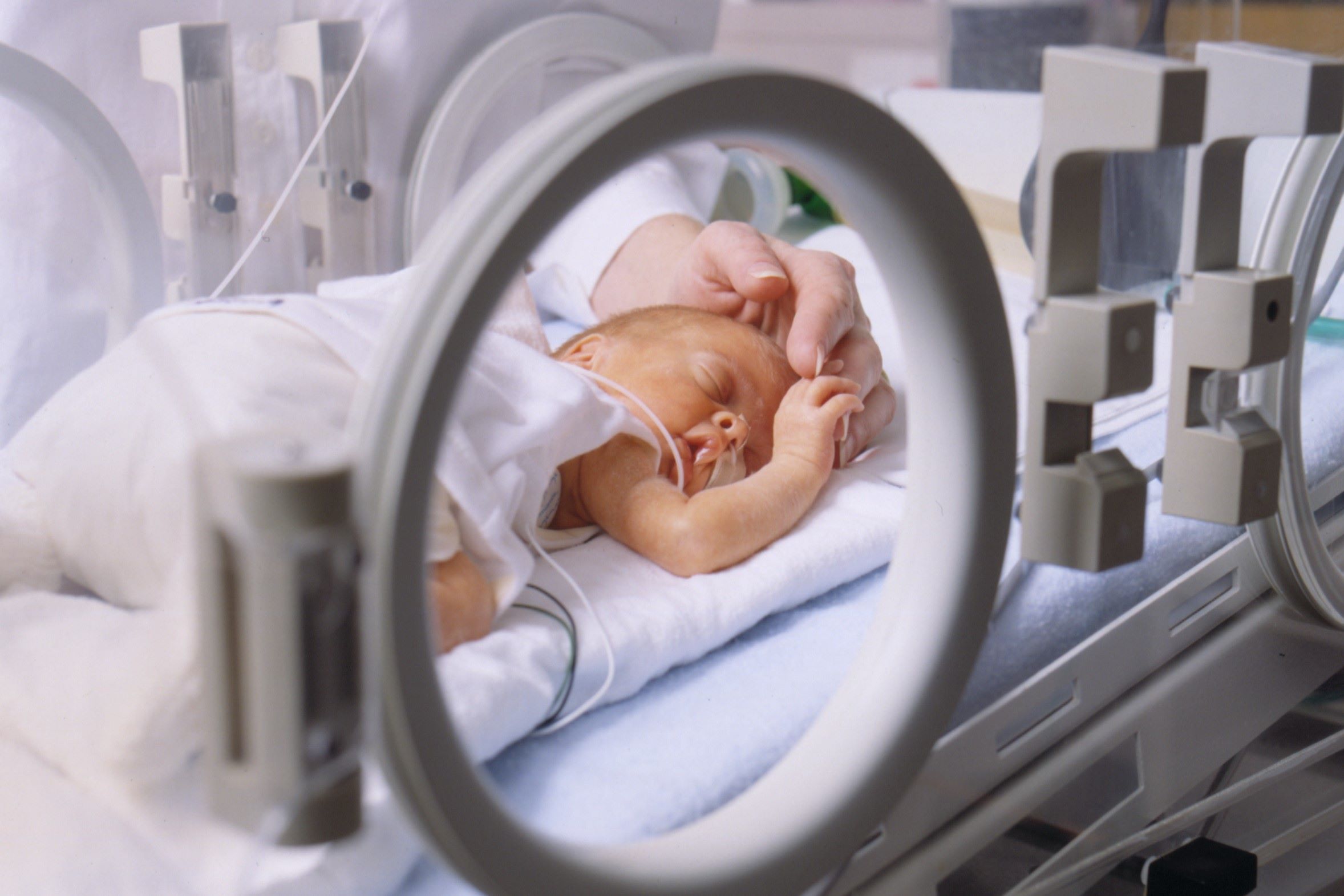
Feingold Syndrome is a rare genetic disorder that affects multiple parts of the body, leading to a variety of congenital anomalies. This condition is divided into two types: Feingold Syndrome Type 1 (FS1) and Feingold Syndrome Type 2 (FS2), each caused by different genetic mutations. FS1 results from mutations in the MYCN gene, while FS2 is linked to deletions in chromosome 13 affecting the MIR17HG gene. Individuals with Feingold Syndrome often have distinct features such as microcephaly, short palpebral fissures, gastrointestinal atresia, and digital abnormalities. Though the exact prevalence is unknown, it is estimated to affect fewer than 1 in 1 million people. Understanding this syndrome is crucial for proper diagnosis, management, and support for affected individuals and their families.
What is Feingold Syndrome?
Feingold syndrome, also known as microcephaly-oculo-digito-esophageal-duodenal syndrome (MODES syndrome), is a rare genetic disorder. It affects multiple body systems, including the limbs, eyes, digestive system, and brain. Here are some key facts to help you understand this complex condition.
-
Definition and Classification
Feingold syndrome is a rare genetic disorder affecting many parts of the body. It is classified into two types: Feingold syndrome type 1 (FS1) and Feingold syndrome type 2 (FS2), each caused by mutations in different genes. -
Prevalence
The exact prevalence of Feingold syndrome is unknown, but it is estimated to occur in less than 1 in 1 million people. Type 1 is more common than type 2.
Genetic Causes of Feingold Syndrome
Understanding the genetic basis of Feingold syndrome is crucial for diagnosis and management. Let's dive into the genetic mutations responsible for this condition.
-
Genetic Cause
Feingold syndrome type 1 is caused by a mutation or deletion in the proto-oncogene MYCN located on chromosome 2p24.3. This gene encodes a protein with a basic helix-loop-helix domain that is expressed at various stages of human embryonic development. -
Gene Mutation in Type 2
Feingold syndrome type 2 is caused by a deletion in chromosome 13 that removes a region including the MIR17HG gene. This gene provides instructions for making a set of microRNAs (miRNAs) known as the miR-17~92 cluster, which are involved in the development of many tissues and organs.
Clinical Characteristics
Feingold syndrome presents with a variety of clinical features that can affect different parts of the body. Here are some of the most common characteristics.
-
Microcephaly
Individuals with Feingold syndrome often have microcephaly, which means an unusually small head size. -
Short Palpebral Fissures
Short palpebral fissures refer to the narrow opening of the eyelids, a common feature in Feingold syndrome. -
Gastrointestinal Atresia
Gastrointestinal atresia is a blockage in part of the digestive system, most commonly in the esophagus (esophageal atresia) or small intestine (duodenal atresia). -
Digital Abnormalities
Feingold syndrome often involves digital abnormalities such as brachymesophalangy (shortening of the second and fifth fingers), clinodactyly (fifth fingers that curve inward), thumb hypoplasia (underdeveloped thumbs), and toe syndactyly (fusion of the second and third toes or the fourth and fifth toes).
Facial Dysmorphism and Intellectual Disability
Facial features and intellectual abilities can also be affected by Feingold syndrome. Here are some of the key aspects.
-
Facial Dysmorphism
Individuals with Feingold syndrome often have facial dysmorphism, including short palpebral fissures and micrognathia (a small jaw). -
Intellectual Disability
Mild to moderate learning disabilities are common in individuals with Feingold syndrome. Severe intellectual disability is very rarely seen.
Variable Expressivity and Treatment
The severity of Feingold syndrome can vary widely among individuals. Treatment often involves addressing specific congenital anomalies.
-
Variable Expressivity
The expressivity of the condition can vary significantly within and between families. Some individuals may exhibit more severe symptoms, while others may have milder manifestations. -
Gastrointestinal Atresia Treatment
Gastrointestinal atresia must be treated immediately to avoid serious complications, including respiratory distress and abdominal distension. Surgical correction is typically required.
Diagnostic Methods and Differential Diagnosis
Accurate diagnosis is essential for managing Feingold syndrome. Here are some methods used to diagnose the condition and differentiate it from other disorders.
-
Diagnostic Methods
Diagnosis of Feingold syndrome is based on characteristic clinical features and imaging studies. Gastrointestinal atresia can be identified using prenatal or postnatal ultrasound or MRI. Molecular genetic testing can confirm a diagnosis by identifying mutations in the MYCN or MIR17HG genes. -
Differential Diagnosis
The differential diagnosis for Feingold syndrome includes other conditions such as Feingold syndrome type 2, VACTERL association, CHARGE syndrome, brachydactyly type A4, and Fanconi anemia.
Inheritance and Prenatal Testing
Feingold syndrome is inherited in a specific pattern, and prenatal testing can help identify affected fetuses.
-
Inheritance Pattern
Feingold syndrome is inherited in an autosomal dominant pattern, meaning one copy of the altered gene in each cell is sufficient to cause the disorder. However, most cases arise de novo (without a family history). -
Prenatal Testing
Prenatal testing is possible in families with a known MYCN mutation or deletion. This can help identify affected fetuses and allow for appropriate planning and management.
Genetic Counseling and Management
Genetic counseling and proper management are crucial for families affected by Feingold syndrome.
-
Genetic Counseling
Genetic counseling is recommended for families affected by Feingold syndrome. This can help individuals understand the risks and implications of the condition and make informed decisions about their reproductive choices. -
Management and Treatment
Management of Feingold syndrome typically centers on surgical correction of the specific congenital anomalies. This may include procedures to address gastrointestinal atresia, digital abnormalities, and other associated conditions. Comprehensive medical examinations are also necessary to identify possible anomalies of the heart or kidneys.
Surgical Interventions and Medical Examinations
Surgical interventions and regular medical examinations play a vital role in managing Feingold syndrome.
-
Surgical Interventions
Surgical interventions are crucial for managing the various congenital anomalies associated with Feingold syndrome. These procedures aim to restore normal function and appearance to affected organs and limbs. -
Medical Examinations
Extensive medical examinations are needed to identify possible anomalies of the heart or kidneys. Regular follow-up care is essential to monitor the development and management of associated conditions.
Support and Community Resources
Living with Feingold syndrome can be challenging, but support and community resources can make a significant difference.
-
Learning Disability Support
Individuals with mild to moderate learning disabilities may require additional educational support. Early intervention and specialized educational programs can help mitigate the impact of these disabilities. -
Psychological Support
Living with a rare genetic disorder can have significant psychological implications. Providing psychological support and counseling can help individuals and their families cope with the emotional challenges associated with Feingold syndrome. -
Community Resources
Access to community resources, such as support groups and online forums, can be invaluable for individuals and families affected by Feingold syndrome. These resources provide a platform for sharing experiences, seeking advice, and connecting with others who understand the challenges of living with this condition.
Research and Future Directions
Ongoing research aims to better understand Feingold syndrome and improve the lives of those affected.
-
Research and Development
Ongoing research into Feingold syndrome aims to better understand its genetic and clinical manifestations. This research also seeks to develop more effective diagnostic tools and treatments, ultimately improving the quality of life for those affected by this condition. -
Future Directions
Future research into Feingold syndrome aims to uncover the molecular mechanisms underlying its pathogenesis. This knowledge will be crucial for developing targeted therapies and improving the management of associated conditions, ultimately enhancing the quality of life for individuals affected by this rare genetic disorder.
Understanding Feingold Syndrome
Feingold syndrome is a rare genetic disorder with a wide range of symptoms affecting multiple body systems. From microcephaly and short palpebral fissures to gastrointestinal atresia and digital abnormalities, the condition presents unique challenges. It's caused by mutations in the MYCN gene for type 1 and deletions in the MIR17HG gene for type 2. Diagnosis often involves genetic testing, and treatment usually requires surgical interventions.
Genetic counseling and prenatal testing can help families make informed decisions. Support from educational programs and psychological counseling is crucial for managing learning disabilities and emotional challenges. Ongoing research aims to improve diagnostic tools and treatments, enhancing the quality of life for those affected. Understanding the genetic and clinical aspects of Feingold syndrome is vital for effective management and support, helping individuals and families navigate this complex condition.
Was this page helpful?
Our commitment to delivering trustworthy and engaging content is at the heart of what we do. Each fact on our site is contributed by real users like you, bringing a wealth of diverse insights and information. To ensure the highest standards of accuracy and reliability, our dedicated editors meticulously review each submission. This process guarantees that the facts we share are not only fascinating but also credible. Trust in our commitment to quality and authenticity as you explore and learn with us.


